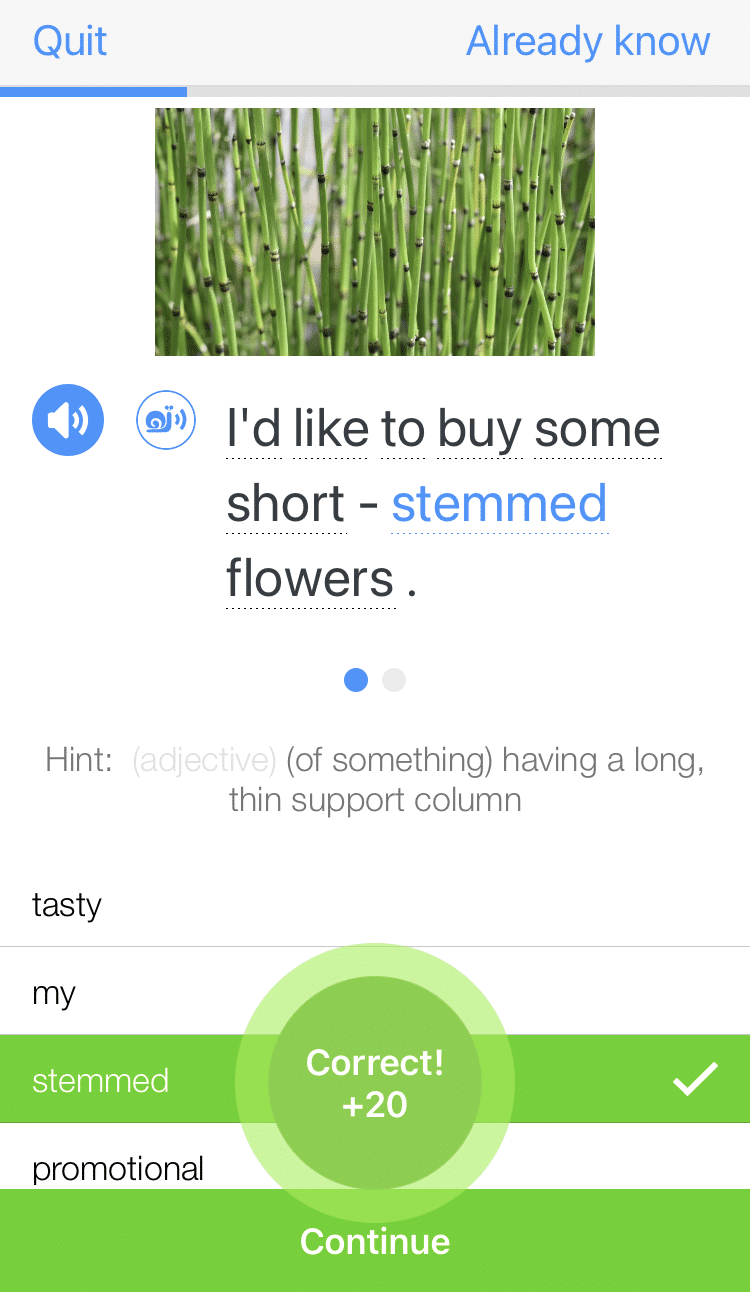The Importance of Pronunciation in English and How to Speak Clearly

English pronunciation is incredibly important if you want to be understood and avoid miscommunications. Pronunciation should never be overlooked, so below you’ll find essential mistakes to avoid and resources to improve your overall pronunciation skills.
With better pronunciation, you’ll be one step closer to English fluency.
Download: This blog post is available as a convenient and portable PDF that you can take anywhere. Click here to get a copy. (Download)
Why is English Pronunciation Important?
New English speakers can be easily misunderstood when pronouncing words incorrectly.
Furthermore, when even only one word is pronounced incorrectly, many people will think they understood you and therefore won’t ask for clarification. This can lead to some very confusing miscommunications!
That’s why it’s important to identify and fix common pronunciation mistakes to create smoother relationships with new English-speaking friends, business contacts, service people such as waiters or hairdressers and many others.
Important Mistakes to Avoid for Good Pronunciation
If you’d like to see some of these mistakes demonstrated verbally, we also have this lesson from our YouTube channel:
1. Not paying attention to word stress
When used in the context of linguistics, word stress essentially refers to the syllable in a word that’s emphasized the most.
Some languages, like Spanish, use accents to show stress, but English offers no such easy trick. Stress is very important when speaking English because a word can entirely change meaning depending on where you put the stress.
For the purpose of the examples here, I’ll divide syllables with dashes and show stress with bold text. Consider the word “contest,” which has two syllables: con-test.
You can either put stress on the first syllable or the second, which would be as follows.
a contest — /con-test/
to contest — /con-test/
The word with stress on the first syllable is a noun that means “a competition.” The word with stress on the second syllable is a verb that means “to oppose.” Note that in this case, the word stress not only changes the meaning of the word but also the part of speech (noun vs. verb).
Let’s look at another example. The word “present” has two syllables that can be broken up and stressed differently depending on what you wish to say.
a present — /pres-ent/
to present — /pre-sent/
The first example is a noun meaning “a gift.” The second is a verb that means “to introduce.”
The website Word Stress is a great resource to practice pronunciation with correct word stress. It breaks words down into syllables and you have to guess which syllable you think the word stress falls on.
It helpfully tracks the number of words you get correct, so you can see your progress as you practice. Plus, you can click to reveal a word’s part of speech, definition, stress and its International Phonetic Alphabet (IPA) symbols.
2. Forgetting to use correct intonation
If you didn’t raise or lower your voice at certain parts of each sentence, you’d sound like a robot!
Intonation involves the rise and fall of your voice when speaking in full sentences. Incorrect intonation can change the meaning of a sentence or just sound very strange to native speakers. It’s especially important for conveying feelings or adding nuance to sentences.
For example, think about the sentence, “Why are you home so late?”
Imagine asking your spouse this simple question, genuinely wondering why he or she is home late. Practice the question aloud with a tone of curiosity. Perhaps you’d use a light falling intonation at the end of your sentence.
Now, practice saying it while imagining that you’re angry, believing that your spouse has been out doing something you aren’t happy about. When using an accusatory tone, your pitch might rapidly rise and fall.
It’s important to master English intonation if you want to sound natural and keep listeners focused on the content of your sentences. Here’s an in-depth guide to how English speakers use intonation in different contexts. For more practice, FluentU is a language learning program that’s based on native English videos. Watching videos to hear natural intonation and correct pronunciation is a powerful way to improve your own speaking skills.
FluentU takes authentic videos—like music videos, movie trailers, news and inspiring talks—and turns them into personalized language learning lessons.
You can try FluentU for free for 2 weeks. Check out the website or download the iOS app or Android app.
P.S. Click here to take advantage of our current sale! (Expires at the end of this month.)

3. Saying heteronyms the same way
Heteronyms are words that are spelled exactly the same way but mean different things.
For example, “read” looks the exact same in both the present and past tense.
However, the pronunciation is quite different, with the present tense using a long “e” sound, like “reed,” and the past tense using the short “e” sound, like “red.”
To avoid this mistake, learners should take the time to familiarize themselves with some of the most frequently used heteronyms. Here’s a helpful list of common heteronyms and how to pronounce them.
4. Sounding out each vowel only one way
English vowels can be complicated and one letter can have many different sounds.
For example, the little vowel “o” has three distinct sounds, and that’s without considering vowel combination sounds! Listen to the following words.
Notice how each “o” is pronounced differently.
It’s really important that learners take the time to study every possible sound made by English vowels. For an in-depth guide on all the English vowel sounds, check out this article.
5. Pronouncing “th” only one way
Here’s another mistake similar to the one above. The English syllable “th” has two distinct pronunciations, which many English learners tend to forget.
“Th” can either be voiced (with vocal chord vibration) or voiceless (without vocal chord vibration). Here’s how that actually sounds.
than — voiced “th”
path — voiceless “th”
The easiest way to tell the difference is to put your fingers on your throat and see if you can feel vibrations.
You can see and hear a list of words that use the voiced “th” on this page from the University of California Berkeley. They also have one for the voiceless “th” here.
6. Vocalizing silent letters
It’s important to remember that pronunciation doesn’t always go by the letters in a word. Very often, certain letters aren’t pronounced in English words.
Consider the word “used” in the following two sentences. When alone, as in the first sentence, you pronounce the final “d” in “used.” However, when it’s a part of the phrase “used to,” the final “d” sound is dropped.
used — I used the last of the shampoo.
used to — I used to hate broccoli.
Ah! Tricky, right? Here’s a helpful video on some of the most common silent letters in English.
Best Resources to Practice Pronunciation
After all that, it would be a good idea to practice even more! There are many diverse online resources you can use to practice English pronunciation and the following are a great place to start.

You can start with their series “Tim’s Pronunciation Workshop,” which tackles a variety of pronunciation topics and, as a bonus, includes transcripts for the videos.
At the bottom of this site, you can also find video instructions to pronounce individual sounds in English.

As an added incentive, the site lets you create vocabulary lists and quizzes so you can save and work on the words giving you particular pronunciation trouble.

Focusing on minimal pairs helps fine-tune your ear in English and catch your own bad pronunciation habits.
Hopefully, you recognize the necessity of studying pronunciation and are ready to dedicate new time and energy to mastering this important English skill!
Download: This blog post is available as a convenient and portable PDF that you can take anywhere. Click here to get a copy. (Download)
And One More Thing...
If you like learning English through movies and online media, you should also check out FluentU. FluentU lets you learn English from popular talk shows, catchy music videos and funny commercials, as you can see here:
The FluentU app and website makes it really easy to watch English videos. There are captions that are interactive. That means you can tap on any word to see an image, definition, and useful examples.
For example, when you tap on the word "searching," you see this:
Learn all the vocabulary in any video with quizzes. Swipe left or right to see more examples for the word you’re learning.

FluentU helps you learn fast with useful questions and multiple examples. Learn more.
The best part? FluentU remembers the vocabulary that you’re learning. It gives you extra practice with difficult words—and reminds you when it’s time to review what you’ve learned. You have a truly personalized experience.
Start using the FluentU website on your computer or tablet or, better yet, download the FluentU app from the iTunes or Google Play store. Click here to take advantage of our current sale! (Expires at the end of this month.)










